Can Cats Eat Chicken Breast? The Purr-fect Protein Explained!
- 23 May 2025 09:21
As cat owners, we're constantly seeking the best ways to nourish our feline companions. Chicken is a cornerstone ingredient in many commercial cat foods, leading many to wonder: can cats eat chicken breast directly from our kitchens? The answer is a definitive YES! Plain, cooked chicken breast can be an excellent source of lean protein for cats and is often a highly palatable treat or meal supplement. However, "plain" and "cooked" are crucial keywords. This comprehensive guide will delve into the benefits, a_nd potential risks, and the proper way to prepare chicken breast for your cat, ensuring it's a safe and healthy addition to their diet.
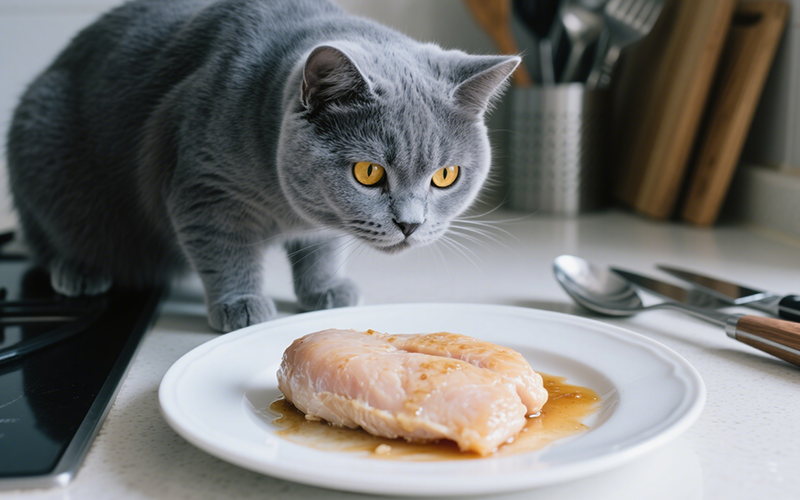
The Nutritional Powerhouse: Why Chicken Breast is Great for Cats
Chicken breast, when prepared correctly, offers a wealth of nutritional benefits for our obligate carnivore friends:
| Nutrient in Chicken Breast | Benefit for Cats |
| High-Quality Lean Protein | Essential for muscle development, maintenance, and repair. Supports enzyme and hormone production, immune function, and overall growth. As obligate carnivores, cats thrive on animal-based protein. |
| Taurine | An essential amino acid for cats, crucial for normal vision, heart muscle function, digestion, and a healthy immune system. Cats cannot synthesize enough taurine on their own and must obtain it from their diet (animal tissues are rich sources). |
| Vitamin B6 (Pyridoxine) | Involved in amino acid metabolism, glucose generation, red blood cell function, and nervous system function. |
| Niacin (Vitamin B3) | Essential for energy metabolism, skin health, and nervous system function. |
| Selenium | A trace mineral that acts as an antioxidant, supports thyroid function, and plays a role in immune health. |
| Phosphorus | Works with calcium to build and maintain strong bones and teeth. Also involved in energy metabolism. |
| Low in Fat (when skinless) | Skinless chicken breast is a lean protein source, making it suitable for cats needing weight management or those prone to pancreatitis (when fat is a concern). |
These nutrients underscore why plain, cooked chicken breast is often recommended by veterinarians as a healthy treat or a component of a home-cooked diet (when properly balanced).
The Golden Rules: How to Prepare Chicken Breast Safely for Your Cat
The safety and health benefits of chicken breast for your cat hinge entirely on its preparation. Simply put: it MUST be cooked, and it MUST be plain.
Safe Preparation Methods:
Thoroughly Cooked – No Raw Chicken!
Boiling: Simmer boneless, skinless chicken breast in plain water until cooked through. This method also yields a mild chicken broth that some cats enjoy (ensure no salt or seasonings are added to the water).
Baking/Roasting: Bake or roast plain chicken breast in the oven without any oils, fats, or seasonings until fully cooked.
Steaming: Steaming is another healthy way to cook chicken breast without added fats.
Raw chicken can harbor dangerous bacteria like Salmonella and Campylobacter, which can cause severe food poisoning in cats (and humans handling it). Symptoms in cats can include vomiting, diarrhea (possibly bloody), fever, and lethargy.
Cooking chicken to an internal temperature of 165°F (74°C) kills these harmful bacteria.
Acceptable cooking methods:
Keep it PLAIN – No Seasonings, Oils, or Fats!
No Salt: Cats have a low tolerance for sodium. Excess salt can lead to dehydration and, in severe cases, sodium ion poisoning.
No Garlic or Onions (or powders): These are highly toxic to cats, belonging to the Allium family. They can damage a cat's red blood cells, leading to anemia. Even small amounts can be harmful over time.
No Spices or Herbs: Many common human spices and herbs can cause digestive upset or be toxic to cats. Stick to absolutely plain chicken.
No Oils, Butter, or Fat: Added fats can cause digestive upset (vomiting, diarrhea) and contribute to pancreatitis, a painful and potentially serious inflammation of the pancreas. While chicken fat itself isn't bad in moderation (skin contains fat), added cooking fats are unnecessary and risky.
Boneless is Best:
Choking
Damage to the mouth, throat, or esophagus
Perforation of the stomach or intestines, leading to a life-threatening internal infection (peritonitis).
Cooked chicken bones, especially small, brittle ones from poultry, can splinter easily. These splinters can cause:
While some proponents of raw diets include raw bones, cooked bones are universally recognized as dangerous. Always use boneless chicken breast or meticulously remove all bones after cooking if using bone-in cuts (though breast is usually sold boneless).
Skinless (Usually Recommended for Treats):
Chicken skin is high in fat. While a small amount of plain, cooked skin isn't inherently toxic, it significantly increases the calorie and fat content.
For cats that are overweight, prone to pancreatitis, or have sensitive stomachs, it's best to remove the skin.
If your cat is healthy and active, a tiny bit of plain cooked skin as an occasional treat might be acceptable, but skinless is generally the leaner, safer option for regular treating.
Cool and Shred or Dice:
Allow the cooked chicken breast to cool completely before offering it to your cat to prevent burns.
Shred or dice the chicken into small, bite-sized pieces appropriate for your cat to manage easily. This reduces the risk of choking, especially for kittens or fast eaters.
Adhering to these preparation guidelines is paramount when considering if cats can eat chicken breast safely.
Potential Risks and Considerations
Even with proper preparation, there are a few points to keep in mind:
1. Not a Complete Diet on Its Own
While chicken breast is nutritious, it is not a complete and balanced diet for a cat. Cats have specific nutritional requirements, including a precise balance of amino acids (like taurine, which chicken breast contains, but it needs to be part of a broader profile), vitamins, minerals, and fatty acids. Feeding only chicken breast long-term will lead to serious nutritional deficiencies.
Treats vs. Meals: Plain cooked chicken breast is excellent as a high-value treat or a temporary appetite stimulant for a sick cat (with vet approval).
Home-Cooked Diets: If you intend to feed a home-cooked diet with chicken breast as a primary ingredient, it MUST be formulated by a veterinary nutritionist to ensure it's balanced and meets all of your cat's needs. This often involves adding specific supplements. Do not attempt to create a home-cooked diet without professional guidance.
2. Allergic Reactions (Uncommon but Possible)
Chicken is a common ingredient in cat food, so true allergies are less frequent than to novel proteins. However, some cats can develop allergies or intolerances to chicken. Signs might include:
Itchy skin, excessive grooming
Skin lesions or rashes
Recurrent ear infections
Vomiting or diarrhea
If you suspect an allergy, even to plain cooked chicken, consult your veterinarian.
3. Bone Contamination
Even if you buy "boneless" chicken breast, always double-check for any stray bone fragments, cartilage, or sharp pieces before and after cooking, especially if shredding by hand.
4. Caloric Content and Moderation
Chicken breast, while lean, still contains calories. If given as treats, these calories add up.
The 10% Rule: Treats, including plain cooked chicken breast, should not make up more than 10% of your cat's total daily caloric intake. The majority of their calories should come from their complete and balanced cat food.
Weight Management: For overweight cats, even healthy treats need to be factored into their calorie-restricted diet.
5. Risk of Bacterial Contamination (Handling Raw Chicken)
When preparing chicken breast for your cat, practice good food hygiene to protect yourself and your family from bacteria like Salmonella:
Wash hands thoroughly before and after handling raw chicken.
Use separate cutting boards and utensils for raw chicken, or wash them thoroughly with hot, soapy water after use.
Clean and disinfect surfaces that have come into contact with raw chicken.
Serving Suggestions for Your Feline Friend
Here are a few ways to offer plain, cooked chicken breast to your cat:
As High-Value Treats: Small, shredded pieces make excellent rewards for training or just because.
Meal Topper: Sprinkle a small amount of shredded chicken over their regular wet or dry food to enhance palatability, especially if your cat is a picky eater or feeling a bit off.
Appetite Stimulant: For cats that are unwell and have a poor appetite, the aroma and taste of plain boiled chicken can sometimes entice them to eat (always consult your vet if your cat isn't eating).
Pill Pockets: A small piece of soft cooked chicken can sometimes be used to hide medication.
Part of a Vet-Approved Home-Cooked Diet: Only if specifically formulated by a veterinary nutritionist.
PettureX: Your AI Assistant for Quick Pet Care Queries
When you have questions about your cat's diet or general well-being, having a quick and accessible source of information can be very helpful. The PettureX app is designed to be an intelligent assistant for pet owners.
PettureX features:
Image Recognition for Animal Species: Useful for identifying various animals.
Image Recognition for Pet Health: If you notice any unusual skin conditions or other visible issues on your cat, the app's AI can provide preliminary insights. This isn't a replacement for a vet's diagnosis but can guide your next steps.
24/7 AI Consultation: Have a quick question like "How much cooked chicken can I give my cat as a treat?" or "What are signs of a food allergy in cats?" The AI chatbot can provide instant general information based on a wide database of pet care knowledge, always emphasizing the importance of professional veterinary advice for specific health concerns or before making significant dietary changes.
PettureX can be a handy tool for getting immediate, general guidance on topics like safe food preparation or portion sizes for treats like chicken breast, reinforcing best practices for your cat's care.
Conclusion: Chicken Breast is a Feline-Friendly Feast (When Done Right!)
So, can cats eat chicken breast? Absolutely! It's a fantastic source of lean protein and essential nutrients like taurine, making it a healthy and often eagerly accepted treat or meal supplement for most cats.
The keys to ensuring it's a "purr-fect" addition to their diet are:
ALWAYS cook it thoroughly.
ALWAYS serve it plain (NO salt, seasonings, oils, garlic, or onions).
ALWAYS ensure it's boneless.
Serve in moderation as part of a balanced diet.
By following these simple but crucial guidelines, you can safely share the goodness of chicken breast with your beloved feline, contributing to their health and happiness. When in doubt, especially if your cat has underlying health conditions, a quick chat with your veterinarian is always the best approach to ensure you're making the optimal dietary choices for your furry family member.
Frequently Asked Questions (FAQs)
Q1: Can cats eat raw chicken breast?
A: No, it is generally not recommended to feed cats raw chicken breast due to the risk of bacterial contamination from Salmonella, Campylobacter, and other pathogens. These can cause severe gastrointestinal illness in cats and can also pose a risk to humans handling the raw meat. Always cook chicken thoroughly before feeding it to your cat.
Q2: How much cooked chicken breast can I give my cat?
A: If given as a treat, plain cooked chicken breast should not exceed 10% of your cat's total daily caloric intake. For an average-sized cat, this might mean about a tablespoon or two of shredded chicken per day, depending on their overall diet and activity level. If it's being used as a temporary meal replacement for a sick cat (under vet guidance), the portion will be different. Always start with small amounts.
Q3: Can kittens eat chicken breast?
A: Yes, kittens can eat plain, thoroughly cooked, boneless, and finely shredded or minced chicken breast in small amounts once they are weaned and eating solid food. It can be a good source of protein for their growth. Ensure it doesn't replace their specially formulated kitten food, which is crucial for their development.
Q4: Is it okay to feed my cat chicken breast every day?
A: As a small treat, yes, it can be okay to feed a small amount of plain cooked chicken breast daily, provided it doesn't exceed the 10% treat rule and your cat is eating a complete and balanced primary diet. However, it should not be their sole food source as it's not nutritionally complete on its own.
Q5: Can cats eat chicken skin or fat?
A: Plain, cooked chicken skin and fat are not toxic to cats, but they are very high in fat and calories. Large amounts can lead to digestive upset (vomiting, diarrhea) or contribute to pancreatitis in susceptible cats. For overweight cats or those with sensitive systems, it's best to remove the skin and visible fat. A tiny bit of plain cooked skin as a rare treat for a healthy cat might be acceptable, but it's generally better to stick to the lean breast meat.
Q6: What about deli chicken breast or rotisserie chicken for cats?
A: It's generally best to avoid deli-sliced chicken breast and rotisserie chicken for cats.
Deli Chicken: Often high in sodium and may contain nitrates, nitrites, and other preservatives that are not healthy for cats.
Rotisserie Chicken: Typically seasoned heavily with salt, spices, garlic, and onion powder, all of which can be harmful or toxic to cats. The skin is also usually very fatty and seasoned.
Stick to plain chicken breast that you cook yourself without any additives.
Related
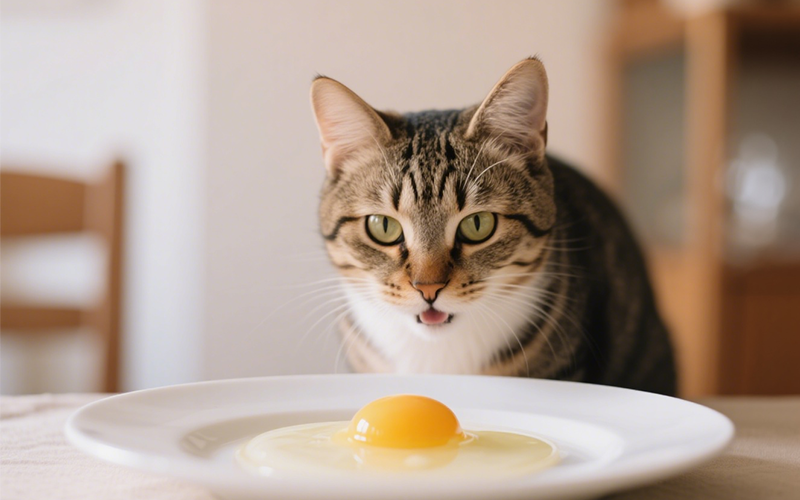
Can Cats Eat Egg Yolk Raw? A Vet's In-Depth Guide to Feline Nutrition & Safety
- 10 Jun 2025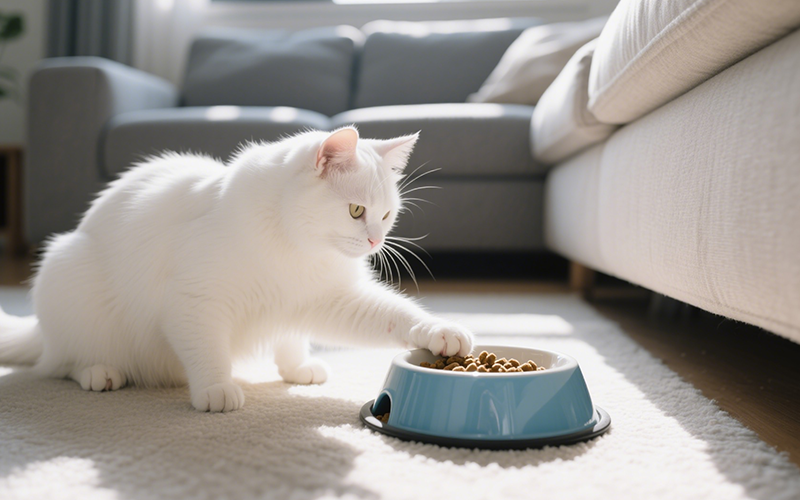
Can Cats Eat Dog Kibble? Unpacking the Nutritional Mismatch!
- 29 May 2025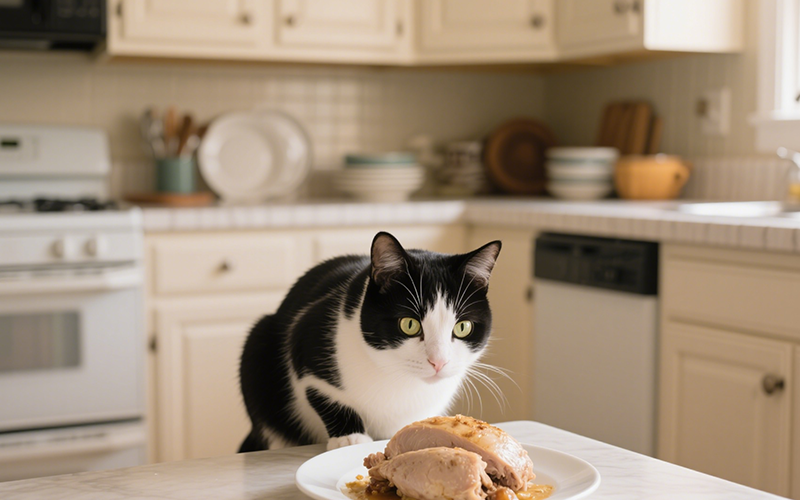
Can Cats Eat Deli Turkey? Slicing Through the Facts for Your Feline!
- 29 May 2025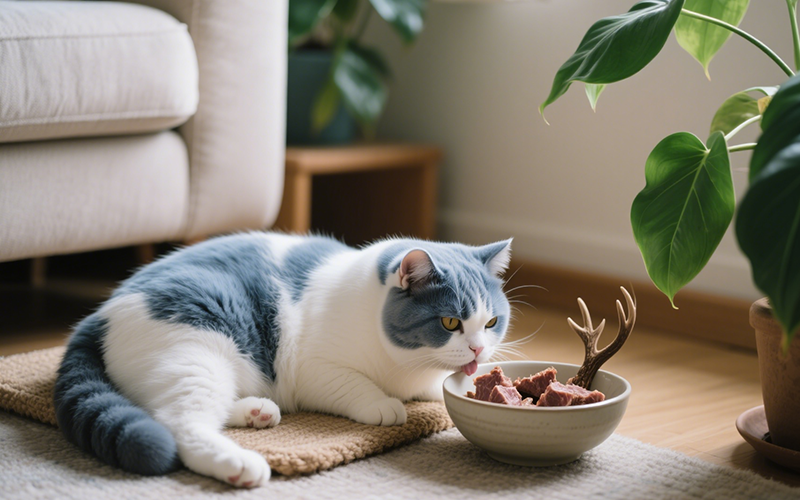
Can Cats Eat Deer Meat? Exploring Venison for Your Feline!
- 28 May 2025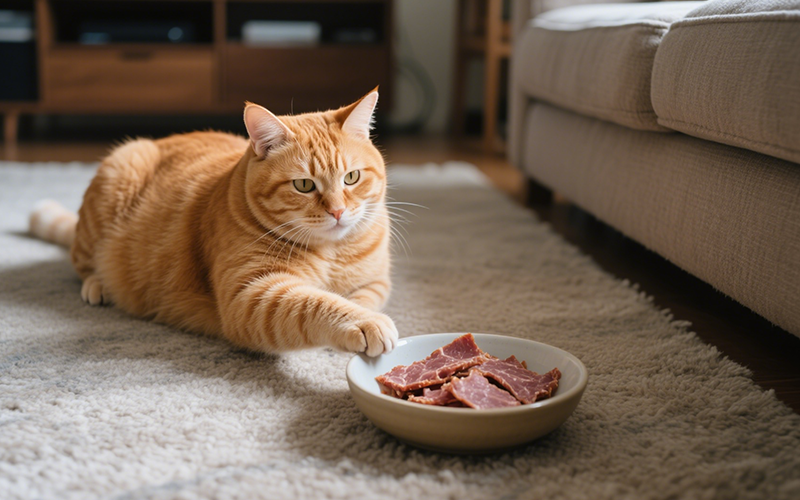
Can Cats Eat Corned Beef? Unpacking This Salty Human Delicacy!
- 28 May 2025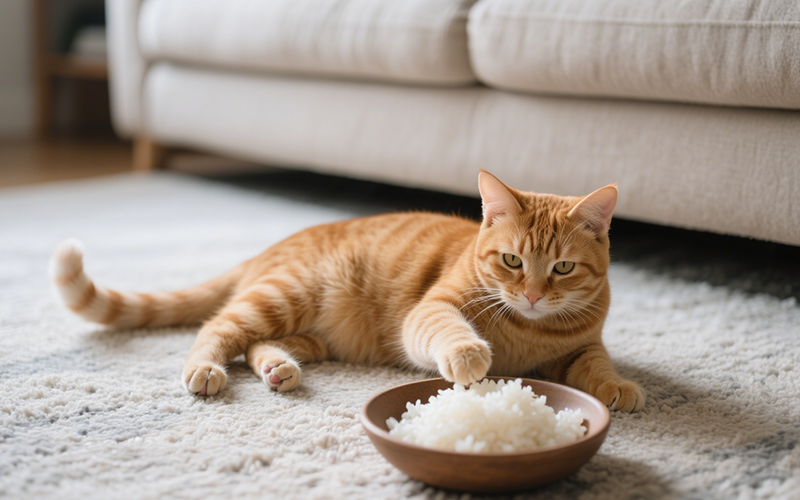
Can Cats Eat Cooked Rice? The Grain Truth for Your Feline Friend!
- 27 May 2025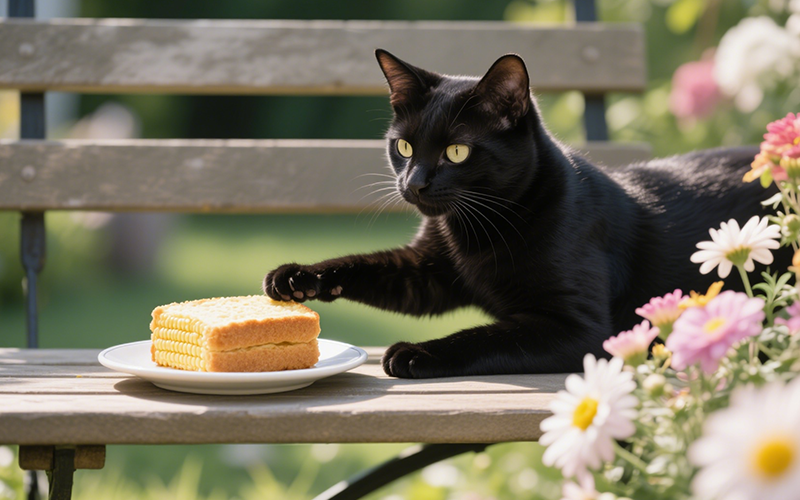
Can Cats Eat Cornbread? A Crumb of Truth for Curious Cat Owners!
- 27 May 2025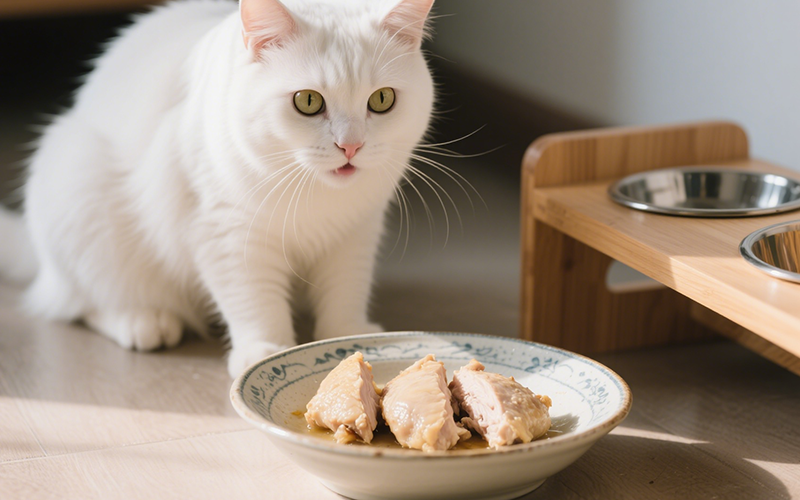
Can Cats Eat Cooked Meat? Sizzling Facts for Your Feline's Feast!
- 26 May 2025
Can Cats Eat Chili? Spicing Up the Truth About This Human Dish!
- 26 May 2025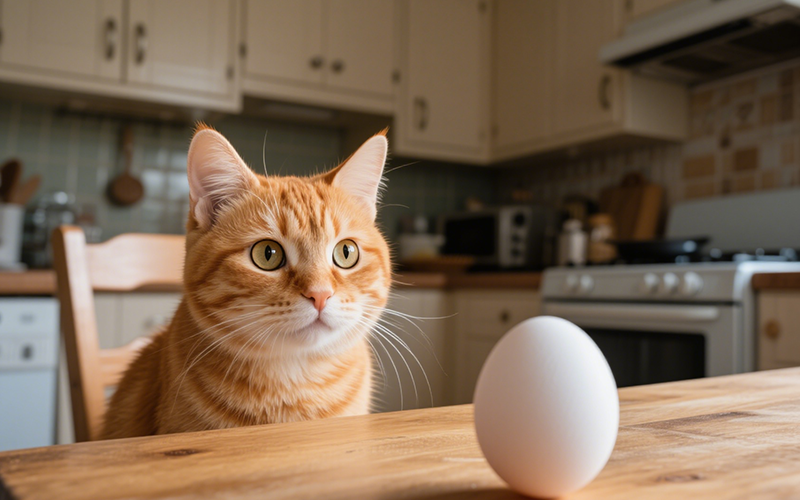
Can Cats Eat Chicken Eggs? Cracking the Code on This Feline Food Query!
- 24 May 2025
